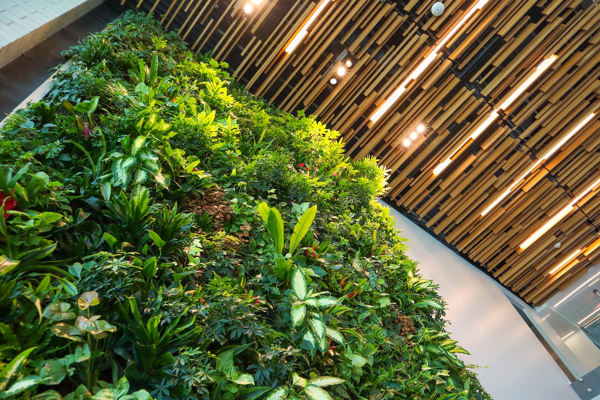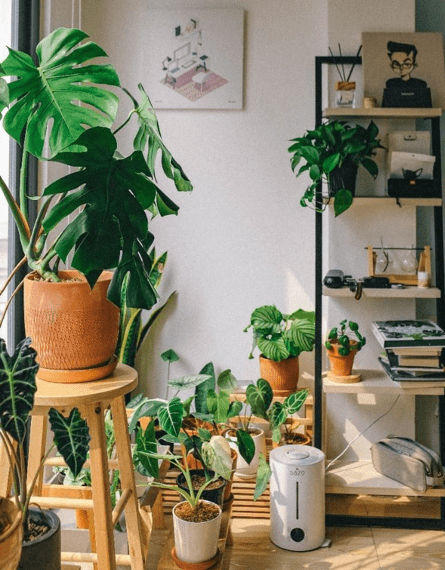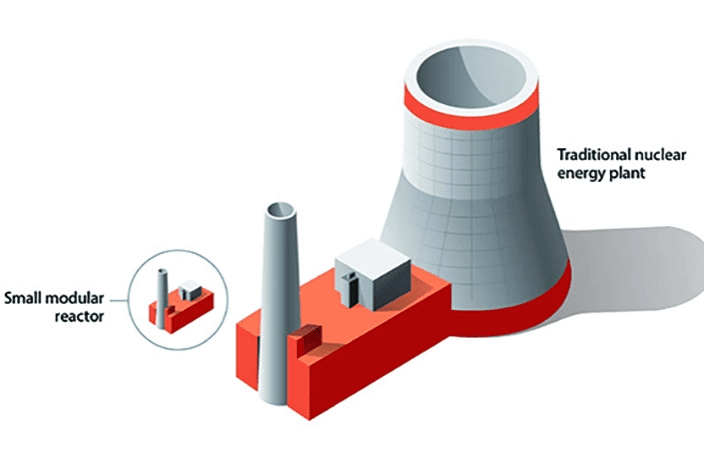Houseplants are often thought of as ornamental pieces to liven up a room. When I got my monstera, pathos and aloe for my apartment, aesthetics was indeed the only concern. However, it turns out that indoor plants do so much more.
Nowadays, most people spend around 90 percent of their time inside homes, offices or schools, and many newer buildings are well-insulated with poor airflow. This leads to the accumulation of pollutants including carbon dioxide, nitrogen oxides and other harmful volatile organic compounds (VOCs). At high enough concentrations, these pollutants can lead to severe symptoms and over time can cause Sick Building Syndrome (SBS). SBS describes the collective health issues that arise from exposure to an unsuitable microclimate, including congestion, headaches, drowsiness, irritability and distress.
Pulling out pollutants
Carbon dioxide is a common indicator of indoor air quality (IAQ). Plants consume carbon dioxide when they photosynthesize, so in theory, indoor plants lower carbon dioxide levels. In practice, studies show that hundreds of plants would be needed to offset the amount of carbon dioxide each person produces. Additionally, carbon dioxide consumption is light-dependent, and most indoor plants don’t get near proper light levels, further limiting plants’ carbon dioxide-reducing abilities.
While carbon dioxide levels are too high for plants to have an appreciable effect, plants have been shown to significantly reduce other less concentrated pollutants. One study showed plants significantly reduce the levels of nitrogen oxide compounds commonly released from automobiles. The study suggested that the soil microbiome of the plants is responsible for this action, though more work needs to be done to reach a consensus. This means that while the rate of pollutant reduction is relatively small, purifying occurs day and night without the need for light. This is especially effective for compounds that are dangerous in relatively small concentrations, such as nitrogen oxides and other VOCs. Additionally, airborne particulate matter, a complex mixture of solids and aerosols under ten micrometers that can irritate the lungs, is reduced about 50 percent in areas with plants.
It’s important to note that while being affordable and sustainable, using potted plants to improve IAQ is a strategy best used in conjunction with effective ventilation and air filtration; houseplants can only compensate for smaller concerns. An alternative solution to potted plants is active biofilters, also known as green walls, which combine plants and ventilation. In these setups, air is blown through a large volume of plants and growth material with beneficial bacteria to remove pollutants. Green walls are more effective than potted plants at improving IAQ but require much more setup and come at a higher cost.
Beneficial emissions
Houseplants do more than removing harmful compounds from the air to improve IAQ. Relative humidity below 30 percent can cause eye irritation, skin dryness and an increase in disease transmission. Plants increase the humidity to healthier levels (30-50 percent) through transpiration, or evaporation from leaves. This process is self-regulated, meaning plants will only release enough water to bring humidity to a suitable range, as humidity above 60 percent is also harmful.
Plants also emit non-harmful VOCs as well as essential oils with potentially immunoprotective or antiviral properties. These beneficial VOCs include flavor or scent terpenoids, aldehydes, esters and alcohols depending on the plant. These interfere with microbes at a molecular level, lowering disease transmission. Some essential oils are known to improve concentration and productivity, reduce stress, and improve mood. Together, these beneficial compounds released from indoor plants parallel the practice of forest bathing, spending time in green areas such as forests to gain health benefits, but in a more accessible manner for urban environments.
Plants’ psychological benefits
Perhaps more impactful than the improvement of IAQ are the psychological benefits of indoor plants. Just a brief five-minute visual exposure improves concentration and mental health, as shown by stress indicators such as lower heart rate variability and blood pressure. This may be due to something as simple as improved aesthetics since most plants are considered beautiful to some extent. The color green is considered calming and could have an uplifting effect. Having plants around also improves the perception of IAQ and general well-being.
Caring for your own plants provides additional benefits. The biophilia hypothesis states that humans have an inherent need to connect with nature or other living creatures. Thus, more time spent in nature increases affinity to it, leading to mindfulness. Empirical results show that more time spent caring for plants, a greater number of plants and a longer duration of experience are all correlated with improved mental health and mindfulness, which has an impact on long-term physical health. People with more plants are generally happier, less aggressive and have fewer mental disorders.
Plants are effective, affordable and sustainable, which when curated well, can benefit both physical and psychological health. Peace lilies, ivy and weeping figs are some common houseplants in studies and homes that are both easy to acquire and manage. Having more plants around increases exposure to their benefits. Plants can improve air quality, which enhances concentration and productivity and limits symptoms associated with Sick Building Syndrome, and caring for plants boosts mindfulness and mental well-being.
Speaking from experience, the plants in my apartment have been a source of enjoyment and clarity. I often start with smaller plants or cuttings, and it’s wonderful to see them grow. I’ve found that it can be a fulfilling experience learning how to best care for each plant. Plants can be a great purchase or gift to decorate indoor spaces and improve our wellbeing.
**Editor’s note: If you are a pet parent considering becoming a plant parent, research which plants are safe for your current companions! For example, lilies are extremely dangerous to cats, and some holiday plants are toxic to both cats and dogs. There are many safe plants out there for your furry companions so it’s possible, with a little planning, to enjoy the benefits of both pets and plants!
-
Elliot Opel is an undergrad at Northwestern University studying biomedical engineering and chemistry. He enjoys caring for a small collection of houseplants in his free time.
View all posts








